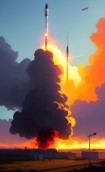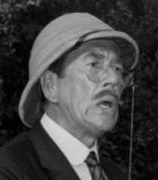|
Jamwad Hilder posted:Some guy in the British army had confirmed kills with a longbow in WW2. He also carried a claymore around. British Army mains hanzo
|
|
|
|

|
| # ? May 27, 2024 19:47 |
|
I would blow Dane Cook posted:Was Hawaii attacked at all after the Pearl Harbour battle was over, like for the rest of the war? No. Yamamoto's long-term objective for Midway was to use it as a stepping stone for invading Hawaii, but the US massively reinforced Hawaii after Pearl Harbor.
|
|
|
|
Elyv posted:Was Hungary just more heavily fortified than the areas the Mongols were in the Middle East? I know the ME was heavily fortified but my understanding is that the Hungarians just had absolute fucktons of fortifications, especially after the first failed invasion. You know while I think the fortifications of Hungary were significant in holding back the Mongols, but we often neglect perhaps Hungary's greatest defense, which is also evident if we compare with other places the Mongols invaded by didn't conquer: It is far as gently caress from Mongolia. The second invasion of Hungary occurred around the same time as the failed expeditions to Japan, Java, Punjab, and Burma. Some historian speculate the campaigns in Burma were less about adding new territory than they were just supposed to slap the Pagan empire around, score some loot and leave their enemies divided, and I suspect the many Mongol campaigns across Eastern Europe in the 1280s had a similar objective, rather than being about permanently seizing territory. HEY GAIL posted:now how do you administer desolation, exact tribute from nit, or make it part of your political order? these aren't cartoon villains or a force of nature, they're people and they make rational decisions based on the preconceptions they have I think this is something people too often forget in discussions of empire and conquest. If you're a Mongol prince in the 1250s or 1260s, would you rather attack some poor barbarians on the edge of the world, or the world's largest and richest cities that just so happen to be occupied by your rear end in a top hat cousin? It's the same dilemma faced by a Roman General, spend a lifetime of hard labor squashing rebellious Germans on the frontier or risk it all to become emperor of Rome.
|
|
|
|
Jamwad Hilder posted:Some guy in the British army had confirmed kills with a longbow in WW2. He also carried a claymore around. He was also very hairy and carried ammo for Polish gunners.
|
|
|
|
I would blow Dane Cook posted:Was Hawaii attacked at all after the Pearl Harbour battle was over, like for the rest of the war? Yes.
|
|
|
|
Ironically that may have caused the Battle of Midway to shake out like it did, since it led to the US Navy watching French Frigate Shoals. EDIT: Also, some Irish guy working for Mexico has the distinction of being the first foreign power to bomb the US.
|
|
|
|
Cythereal posted:No. Yamamoto's long-term objective for Midway was to use it as a stepping stone for invading Hawaii, but the US massively reinforced Hawaii after Pearl Harbor. It's worth noting that per Shattered Sword many others in the Japanese military thought invading Hawaii was a terrible loving idea. The idea was to force a confrontation, Midway itself had pretty marginal value as an objective.
|
|
|
|
The IJN really didn't have the sealift to invade Hawaii or sustain combat operations there. I'm sure they would have tried anyway, though.
|
|
|
|
I was reading about muskets from online sources and found this from Wikipedia: Matchlock muskets took a long time to reload and many were very inaccurate, so army tacticians typically deployed musketeers in formations to maximize firepower. This tactic was pioneered by the Spanish captian Martín de Eguiluz in his Milicia, Discurso y Regla Militar written in 1586 and first published in Madrid in 1592. His most significant contribution to early modern warfare must rest on his detailed description of the countermarch[28] which the Spanish adapted from a maneuver described in De Re Militari done with javelins. This complex battlefield maneuver consisted in lining up three files of soldiers five ranks deep to shoot and then yield their place at the front to those who had been behind them and then to load again and continue in order to maintain a steady rate of fire. Most historians, including Geoffrey Parker, have ignored Eguiluz, and have erroneously attributed the invention of the countermarch to Maurice of Nassau, although the publication of the Milicia, Discurso y Regla Militar antedates Maurice’s first letter on the subject by two years.[29] Nassau copied the maneuver and taught it to Dutch troops in the Eighty Years' War. Eguiluz also stressed constant drills and training[30] which was later copied by others including Gustavus Adolphus of Sweden. Gustavus made two important advances for his troops. First, he simplified and standardized reloading, then, just like Eguiluz, drilled his musketeers ceaselessly until they reloaded in action by reflex, without becoming distracted. Second, he pioneered the use of the volley or "salvo" as an offensive tactic for Swedish infantry in the Thirty Years' War. 28 de Eguiluz, Martin (1592). Milicia, discurso y regla militar (in Spanish) (1595 ed.). Antwerp: Pedro Pellero. p. fol. 69. 29 de Leon, Fernando Gonzalez (2009). The Road to Rocori: Class, Culture and Command of the Spanish Army in Flanders 1567-1659. Lieden. p. 129. 30 same I've understood that the countermarch had been used by the Chinese crossbowmen hundreds of years before any Europeans invented it in the West. Are any of the other claims correct?
|
|
|
|
From how far could units of musketeers hit other units?
|
|
|
|
Black Leaf posted:I was reading about muskets from online sources and found this from Wikipedia: not that sure about drill though, eveyrone says it was a big deal but i see no references to it at all in descriptions of daily life (as you see from, for instance, the ACW), only instruction manuals HEY GUNS fucked around with this message at 10:47 on Jul 7, 2017 |
|
|
|
bewbies posted:I wrote an article on America's divorce from its army that may or may not be of interest to the thread. There are a lot of smart people here so if you have any feedback on this please to share, I have no thin skin when it comes to my writing. Having lived in both the US and the UK, I've gotta say the US felt a lot more connected to the military than the UK (or probably most other European countries) does, to be honest.
|
|
|
|
Marxist-Jezzinist posted:A warrior class seems like a terrible idea in a world without endemic warfare and with the ability to turn pretty much anyone into someone who can shoot a rifle It's extremely useful politically if you want to be able to engage in imperialistic wars overseas without upsetting the majority of the population. There's a strong argument that you would not have been able to have the 2003 Iraq war or possibly even Afghanistan with a conscript army.
|
|
|
|
MikeCrotch posted:It's extremely useful politically if you want to be able to engage in imperialistic wars overseas without upsetting the majority of the population. There's a strong argument that you would not have been able to have the 2003 Iraq war or possibly even Afghanistan with a conscript army. I've seen that argument before, but on the other hand America went to Vietnam with a draftee army. And the US was going into Afghanistan no matter what after 9/11, unless the Taliban unilaterally disbanded and handed over Osama's head with an apology note and a gift certificate to the Cheesecake Factory.
|
|
|
|
Black Leaf posted:He was also very hairy and carried ammo for Polish gunners. Wojtek is cool too. I found the wikipedia page of the guy I was talking about : https://en.wikipedia.org/wiki/Jack_Churchill quote:In May 1940, Churchill and his unit, the Manchester Regiment, ambushed a German patrol near L'Épinette (near Richebourg in the Pas-de-Calais), France. Churchill gave the signal to attack by cutting down the enemy Feldwebel (staff sergeant) with a barbed arrow, becoming the only British soldier known to have felled an enemy with a longbow in the war. According to his son, Malcolm, "he and his section were in a tower and, as the Germans approached, he said, 'I will shoot that first German with an arrow,' and that's exactly what he did."
|
|
|
Ainsley McTree posted:British Army mains hanzo Technically Sheffield or Birmingham steel....
|
|
|
|
|
Jamwad Hilder posted:Wojtek is cool too. Churchill might have had a bow, but Daniel Inouye got his arm blown off while readying to throw a grenade, pried the live grenade out of his blown-off arm, and threw it at a German MG nest.
|
|
|
|
Lets be honest, most VC cases are hard as nails mad bastards with big guts. Yeah Jack was a Commando which is pretty bad rear end but taking on whole platoons, bunkers or nests solo with injuries or without the right gear is brassy as hell.
|
|
|
|
|
My favorite British soldier story of WWII is Digby Tatham-Warter who not only carried an umbrella into battle (reportedly because he could never remember the daily passphrase) but used it during the battle of Arnhem to disable a German armored car.
|
|
|
|
StandardVC10 posted:It's worth noting that per Shattered Sword many others in the Japanese military thought invading Hawaii was a terrible loving idea. The idea was to force a confrontation, Midway itself had pretty marginal value as an objective. I've seen this in other history books, yeah, but Imperial Japan's military leadership was virtually never not incredibly dysfunctional. lolAleutians
|
|
|
|
OneTruePecos posted:Just getting into it, and apologies for giving proof-reading feedback instead of anything substantive, but there's an editing error on page 2: "Fewer Americans today are have served, ". I assume the "are" is a left-over from a prior version of that sentence. Thanks! This thing's been edited by no fewer than three professional writers, all of whom missed it (as did I obviously). Cythereal posted:I enjoyed the article, but a thought that occurs to me that you didn't address is that I feel the American disconnect from the military may have a lot to do with our perceived status as the lone world superpower. I agree totally and actually had to fight the urge to write about this and other broader socio-economic trends in order to focus the thing solely on the army. That said this is probably worth a look in a piece by itself - does the perceived overwhelming combat power of the US military undermine good decision-making? Or in other words, does having a large standing military create a Maslow's Hammer kind of situation. Ithle01 posted:It's a good read. You might encounter some resistance to this from people who cannot understand the concept that the military is both obscenely overfunded while being grossly underpaid. I'm actually one of the minority of people who think that most of the US military is overpaid, if anything. In example, say you enlisted at 18, now you're a 22 year old E-4 with a wife and kid and you're deploying to Afghanistan. You'll be making right around $50k tax-free, along with free health insurance and other benefits, which I suspect is several times more than the average uneducated 22 year old American is making. A 25 year old captain will be making close to $100k tax-free, which is also a whole lot more than the average 25 year old with a bachelor's degree is making in America right now. Obviously getting deployed to Afghanistan sucks a lot, but you're at the least very well paid for your time there. That being said I agree in general that the spending priorities of the military could use a...serious review, if nothing else. quote:If I had one criticism I'd say it's that you might be overstating the military's willingness to learn from its mistakes, but I'm reading a book on ARPA and RAND's history in Vietnam right now so that might be making me a bit pessimistic (submitting a report that lacked optimism would result in that report being thrown out and subsequently classified to make sure no one can hear your criticism). I get where you're coming from here; it was actually the Vietnam era you mention that helped to give rise to a culture of underwriting and learning from mistakes. There was a whole generation of officers who grew up in Vietnam that created this culture (you've heard of several), but they've all retired and or died now, and my concern is that the army in particular is backsliding into the same sort of bureaucratic nonsense that we saw throughout the 1960s. mlmp08 posted:There's a lot going on in this paragraph, and I'm not sure you've laid it out clearly enough for it to work. I agree completely with this point and I struggled with that paragraph quite a bit. Obviously you can write and entire dissertation or book on the org behavior of the army, which people have done numerous times. What I was trying to communicate is "this are the bad things that happen when no one is willing to seriously criticize an organization"; the papers cited support the argument of course but the way I cited them was...pretty lazy. Maybe a better way to phrase it is something like "if you're serious about making mission command work then you have to be accountable" or something like that? quote:I've sat in numerous meetings where general officers or colonels discuss accessions and seem like they honest-to-god don't understand why fit, young people, with no or minimal criminal record, and with generally good grades/aptitude scores aren't rushing to join the army. So basically, wondering out loud and nodding along sagely as they wonder why a high schooler or college student with decent grades and no major life-fuckup isn't joining the military, when they were maybe 3 years old on 9/11 and when the economy is doing well, compared to 10 years ago. Meanwhile, these potential recruits have spent their entire childhood and young adult lives seeing the army lionized, but also are probably smart enough to realize "oh poo poo, they've been in a forever war in the middle east." This is another good point: I originally had a fairly long paragraph that argued a short-term hit in capability (eg, prioritizing resources to shape recruiting) will have some significant long-term benefits, but I ended up cutting it because of length issues. If you think it is a worthwhile discussion I might try and jam it back in though. mlmp08 posted:Bewbies, upon seeing War Machine drop, unsure if good news overall or whether he's more annoyed that people will say "BUT WAR MACHINE" regarding the claim that media doesn't much like to satirize or critique the army. Then again, it has not received critical acclaim and doesn't seem to have captured anything resembling a large audience. I honestly had no idea this movie was even coming out and while it looks...mediocre it is worth putting in an endnote I think. feedmegin posted:Having lived in both the US and the UK, I've gotta say the US felt a lot more connected to the military than the UK (or probably most other European countries) does, to be honest. This is certainly true in my experience. However, European countries do not do the  thing of putting their military inside a bulletproof container on top of a giant golden pedestal. That willingness to criticize your military is a really important mechanism in a democracy and that goes a long way to papering over the separation issue (in my opinion at least). thing of putting their military inside a bulletproof container on top of a giant golden pedestal. That willingness to criticize your military is a really important mechanism in a democracy and that goes a long way to papering over the separation issue (in my opinion at least).That said I think we can all see some sort of come-to-jesus moment with western European militaries on the horizon, where all or most of NATO is going to have to make the decision to either have a viable standing force or...not. That is going to be a significant political adventure and neither-seen-nor-heard status of most European militaries is going to play into it in a big way.
|
|
|
|
Taerkar posted:My favorite British soldier story of WWII is Digby Tatham-Warter who not only carried an umbrella into battle (reportedly because he could never remember the daily passphrase) but used it during the battle of Arnhem to disable a German armored car. quote:Digby led a bayonet charge against them wearing a bowler hat. He later disabled a German armoured car with his umbrella, incapacitating the driver by shoving the umbrella through the car's observational slit and poking the driver in the eye. quote:Digby then noticed the Padre pinned down by enemy fire while trying to cross the street to get to injured soldiers. Digby got to him and said "Don't worry about the bullets, I've got an umbrella". He then escorted the padre across the street under his umbrella. When he returned to the front line, one of his fellow officers said about his umbrella that "that thing won't do you any good", to which Digby replied "Oh my goodness Pat, but what if it rains?" this motherfucker right here
|
|
|
|
bewbies posted:I agree completely with this point and I struggled with that paragraph quite a bit. Obviously you can write and entire dissertation or book on the org behavior of the army, which people have done numerous times. What I was trying to communicate is "this are the bad things that happen when no one is willing to seriously criticize an organization"; the papers cited support the argument of course but the way I cited them was...pretty lazy. Accountability could work. Alternately, argue that without external critiques of the Army and failures of leadership being held accountable, leaders will often fail to really achieve the mission command tasks of understanding the problem and describing the problem. It's a tricky point to make without really expanding but even giving a nod to "this will help improve practice of mission command" may blunt having readers lazily and/or rabidly spouting off doctrine.
|
|
|
|
P-Mack posted:I've seen that argument before, but on the other hand America went to Vietnam with a draftee army. Vietnam was also much more fiercely protested than either Afghanistan or Iraq though, largely because of the draft. After all Nixon ran on an explicitly anti-draft program; I think you could make a pretty compelling argument that with an all volunteer force the US could have stayed in Vietnam for a lot longer than they did in reality.
|
|
|
bewbies posted:This is another good point: I originally had a fairly long paragraph that argued a short-term hit in capability (eg, prioritizing resources to shape recruiting) will have some significant long-term benefits, but I ended up cutting it because of length issues. If you think it is a worthwhile discussion I might try and jam it back in though. I feel that without it, the article is just vaguely pointing out a problem without much in the way of remedy, and it feels a bit purposeless without that section. I don't know your audience or word limit though, so up to you
|
|
|
|
|
SeanBeansShako posted:Lets be honest, most VC cases are hard as nails mad bastards with big guts. Yeah Jack was a Commando which is pretty bad rear end but taking on whole platoons, bunkers or nests solo with injuries or without the right gear is brassy as hell. It's pretty hard to out-do Charles Upham, one of only three men to win the VC twice, and the only one to do so as a combatant. He won a VC for actions on Crete in which he fought his platoon forward 3 km through strong enemy defences, personally silencing several machine gun nests with grenades, all while his arse was falling out: quote:During the whole of the operations he suffered from dysentery and was able to eat very little, in addition to being wounded and bruised. He then won a second VC (aka bar) in North Africa: quote:Captain C. H. Upham, V.C., was commanding a Company of New Zealand troops in the Western Desert during the operations which culminated in the attack on El Ruweisat Ridge on the night of 14th–15th July, 1942. He was later taken prisoner, at one time leaping from the truck carrying him and making it 400 yards before being recaptured, despite having broken his ankle when he leapt from the truck. After this and other escape attempts he was sent to Colditz, and when finally liberated by US troops he had armed himself and was about to rejoin the fight when he was picked up and sent to Britain. On his return to New Zealand, he received 10,000 pounds raised by well-wishers for him to buy a farm, donated it all to a fund to send children of servicemen to university, and took out a government loan to buy the farm which he then worked for the rest of his life. GotLag fucked around with this message at 16:12 on Jul 7, 2017 |
|
|
|
I'm taking my 10 year old to visit his great-great-grandfather's grave in Belgium next month. We're staying in Ypres for three nights, in the plan already is Brandhoek cemetary, Menen Gate, Arras Memorial and two divisional memorials in the Cambra/Arras area. Anybody have any recommendations for relevant things to see in the area?
|
|
|
|
Japanese Engines The Ha-40 was the Japanese designation for the license-built DB601, with the license being purchased in 1938. Despite this, it would take another 2 years for the Army to start taking interest in liquid-cooled engines, mostly due to the type's success in Europe. It wouldn't be until July 1941 that the first examples were rolling off the production lines, and these were slightly different to German DB601As, the Japanese having upgraded to that standard in April 1940. The Ha-40, as it was called, was a little lighter and slightly more powerful (1,175hp vs 1,100hp) due to differences in production standards. It also differed in the fuel injection system, because Bosch, the company manufacturing it, wouldn't grant the Japanese the license for their system. Thus, Kawasaki, who was building the Ha-40s, turned to Mitsubishi to procure a fuel injection system. There were two planes initially designed to use the Ha-40, the Ki-60 and Ki-61. The Ki-60 was designated as a "Heavy" interceptor, while the Ki-61 was simply a fighter design, the difference between the two being their armament; The Ki-60 carried 2 cannons and 2 machine guns. That configuration proved too much for the design, and it fell below expectations, with only three airframes being produced. The Ki-61 used the lessons learned from the -60, and was accepted for operational use by the IJAAF in 1942. Despite Kawasaki's history of working with liquid-cooled engines prior to the DB601, the Ha-40 still had some cooling issues and, at times, experience crankshaft failures. -On a ferry flight of multiple Ki-61s from the Philippines to New Guinea, early in the Ki-61s production run, where multiple aircraft were forced to ditch in shark-infested waters. A faulty valve pumping engine oil out of an air vent was the culprit. Interestingly, an Ha-40 was modified to accept a steam cooling system, seen in use with the Ki-64, where boiled water would flow into the wings, cool down, and be re-circulated into the system. This proved to be too intensive on maintenance, despite an increase of 30mph at top speeds. A Ki-62 aircraft design existed, spearheaded by Nakajima, which was set to use a Ha-40 engine, a departure from standard Nakajima activities. The project did not proceed very far and, according to the authors, this was most likely a ploy by Nakajima to obtain [information on] a Kawasaki engine. Personally, I wonder if the Ki-63, which was slated to use a Mitsubishi Ha-102, was created for the same purpose... The Ha-40 would see itself be slowly replaced by a new engine in the same "family", the Ha-140. Development began shortly after the Ha-40, but improvements were slow to appear and reliability never reached acceptable levels. When it did work, however, and was mated to the Ki-61 (becoming the Ki-61-IIKai) it had good high-altitude performance. Like many Japanese products of the time, they couldn't be produced fast enough. And production was hurt constantly as the tide of war turned against Japan. A lack of skilled workers to assemble the engines, depletion of high-strength alloy stocks for crankshafts and cylinder blocks, particularly the lack of nickel steel, as well as a decrease in engine oil quality all affected engine production and development.
|
|
|
|
HEY GAIL posted:the other ones are mostly correct: the spanish invented it first but both the spanish and dutch based it on roman sources, the chinese (and japanese) invented it independently and earlier. What's the matchlock musket loading drill again? (Assuming you've just fired, not loading for the first shot that day) Is it something like 1: drop butt to ground 2 remove slow match 3: load powder 4: wadding 5: ball 6: more wadding 7: ram 8: prime pan 9: cover pan 10: cock the gun 11: reattach slow match 12: open pan 13: aim 14: fire And were you doing most of those steps one-handed because you still had to hold the burning match?
|
|
|
|
I would imagine that one hand is both holding the matchlock and the cord, keeping it away from the powder.
|
|
|
|
Yeah, not sure where I was going with that aside from just "holy poo poo, training must have involved a lot of singed eyebrows".
|
|
|
|
Grand Prize Winner posted:What's the matchlock musket loading drill again? (Assuming you've just fired, not loading for the first shot that day) cock it, remove match, place between pinkie and ring finger of off hand (lefthanders do it all backwards with the lock on the other side, i am right handed. At all times imagine that the match is held in this way.) prop butt against right hip, left hand (with match!) held out along the barrel prime pan close the little thing above the pan and make sure it latches, whack your right hand against the stock a few times to knock stray grains of powder off the little thing swing the musket around your body and allow it to come to rest next to your left foot load powder. At this time your left hand should be as far down the musket as it will go. load wadding and ball back up, put the match in the little clamp, tighten the clamp if you have to "try the match," which means pulling the lever ("trigger") with the pan cover latched closed to make sure the match is at the correct angle and the cherry looks good open the pan at "READY" level the gun at "AIM" fire it looks like this https://www.youtube.com/watch?v=Yzf0ZiVr9qw quote:And were you doing most of those steps one-handed because you still had to hold the burning match? HEY GUNS fucked around with this message at 20:39 on Jul 7, 2017 |
|
|
|
Grand Prize Winner posted:Yeah, not sure where I was going with that aside from just "holy poo poo, training must have involved a lot of singed eyebrows".
|
|
|
|
Musketeer class' opening rotation is complex af but they have a high dps ceiling if you master it
|
|
|
|
hey Cyrano, do you have access to a really early census of Germany? i need some info on city/town sizes
|
|
|
|
Ainsley McTree posted:Musketeer class' opening rotation is complex af but they have a high dps ceiling if you master it The devs have just ruined melee dps with all of these updates.
|
|
|
|
HEY GAIL posted:hey Cyrano, do you have access to a really early census of Germany? i need some info on city/town sizes Nope, sorry. My best guess for that kind of thing would be to look into church records. I know a lot of people have used those kinds of records to get at early modern demographics. Walker's German Home Towns is the one that leaps to mind, but I know there are others. edit: if your'e lucky the work's already been done for you. Check out Terrance McIntosh too, although I'm not sure how much of his research is published.
|
|
|
|
General Wallenstien, Hitler, or...?
|
|
|
|
Jobbo_Fett posted:The Ha-40 would see itself be slowly replaced by a new engine in the same "family", the Ha-140. Development began shortly after the Ha-40, but improvements were slow to appear and reliability never reached acceptable levels. When it did work, however, and was mated to the Ki-61 (becoming the Ki-61-IIKai) it had good high-altitude performance. Like many Japanese products of the time, they couldn't be produced fast enough. And production was hurt constantly as the tide of war turned against Japan. A lack of skilled workers to assemble the engines, depletion of high-strength alloy stocks for crankshafts and cylinder blocks, particularly the lack of nickel steel, as well as a decrease in engine oil quality all affected engine production and development. To add to this, Ki-61-II airframe production quickly outstripped Ha-140 engine production, leading the IJA to consider alternative powerplant installations. Which turned out to be a good idea when the Ha-140 factory got bombed. The result was the Ki-100, which was said to work pretty well given the circumstances.
|
|
|
|

|
| # ? May 27, 2024 19:47 |
|
Cyrano4747 posted:Nope, sorry. My best guess for that kind of thing would be to look into church records. I know a lot of people have used those kinds of records to get at early modern demographics. Walker's German Home Towns is the one that leaps to mind, but I know there are others. I was reading an economic paper looking for support for Weber's Protestant work ethic which employed demographic estimates of German cities from 1300-1850 by Paul Bairoch, maybe his 1988 cities and economic development or la population des villes europeenes 800-1850: banque de donnes et analyse sommaire des resultats might be useful? I haven't read them I just copied them from the references list. I get a sense the papers extrapolate estimates where census information is lacking, but it might at least be worth a look.
|
|
|




































